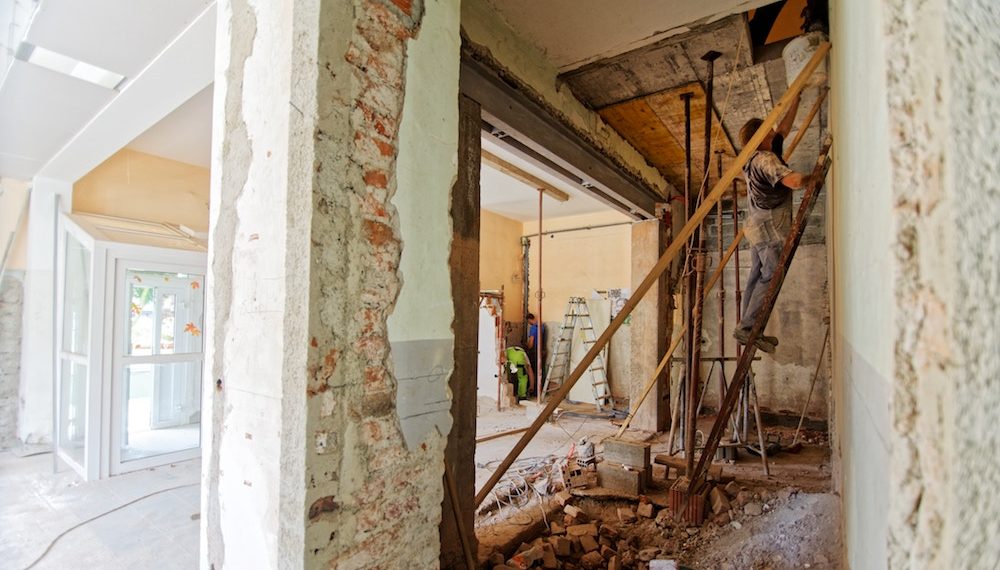
About the author
Jane Slack-Smith has been named one of the Top 10 Property Experts in Australia by Money Magazine, one of the Top 4 Financial Influencers by Qantas and been awarded the Australia’s Mortgage Broker of the Year twice.
Property due diligence is one of the most powerful safeguards investors have to avoid portfolio killers and negotiate deals below market value. Shockingly, as much as 70% of investors skip this crucial step. Don’t make this fatal mistake.
Property due diligence is a crucial measure successful investors take to minimise risk and secure high-performing properties time and time again.
After the lengthy process of location analysis and shortlisting suburbs, many investors give into fatigue and skip this crucial process altogether…
But if you buy the wrong property in a great location, you’ll only be hurting yourself.
And the reality is even the most gorgeous looking home can be hiding serious (and expensive) structural flaws.
So before you even think of signing that dotted line…
Make sure you complete the following due diligence steps.
📋 Initial inspection checks
During initial property inspections checks, I follow a five-step process to gauge whether or not it’s worth proceeding with the rest of my due diligence.
Being thorough with your initial inspection checks will help reduce the time, effort and money you waste on further assessing a property for investment.
✅ Step 1: Leave no stone unturned
Carefully inspect every single room and look out for paintwork, floor coverings, indications of damp or peculiar smells. If it seems like the place is freshly painted every time you visit, something might be getting covered up.
Don’t be afraid to check behind furniture and pictures on walls as well as under mats. Open the curtains and turn on the lights so you can see EVERYTHING.
✅ Step 2: Test, test, test
Turn on taps to test the water pressure and check appliances for any faults.
✅ Step 3: What would a renter think?
Observe the property as a tenant would. Is it aesthetically pleasing or will it need a bit of work to be more accomodating?
✅ Step 4: Inspect 2-3 times
For a full picture of what you might be getting into, inspect the property at different times so you can identify any neighbouring issues like rowdy neighbours or noisy traffic. I highly recommend doing two or three inspections.
✅ Step 5: Take snaps
Always take photos inside and outside the home.
If you end up purchasing the property — after completing all your due diligence steps — these photos will be a great reference point when you do the final inspection.
As outlined in the General Conditions for Sale of Land, purchasers in Victoria are entitled to a final inspection up to seven days before the settlement date.
This timeline varies for other states.
During the final inspection, make sure everything is the way it was when you purchased the property. Check that no fixtures or fittings have been removed without expressed agreement in the Contract of Sale.

🏠 Building and Pest inspection
Once you complete your initial inspection checks and are getting serious about a particular property…
I highly recommend you hire a licensed inspector to do a Building and Pest inspection report.
This step is vital for standalone houses.
However, for properties under strata management — usually apartments, units and townhouses — you will also need to review the Strata Minutes (which we’ll look at next).
Investing in a Building and Pest inspection BEFORE you purchase a property, could stop you walking into a disastrous portfolio killer.
It’s a small amount to pay considering the hundreds of thousands of dollars you could potentially end up saving.
In fact, successful investors use what they find in Building and Pest inspection reports to negotiate better deals and buy below market value.
Just remember, you can fix the small things…
But if there are major structural flaws, I’d err heavily on the side of caution.
Because these repairs are foundational…
They’re extremely expensive but add no perceived value to the property — which makes it impossible to do a profitable renovation.
🔸 Cracking
🔸 Rising damp
🔸 Electrical faults
🔸 Framing faults
🔸 Roof problems
🔸 Illegal building extensions
🔸 Timber rot
🔸 Rotten stumps
🔸 Termites (that are active)
🔸 Poor water supply
If you fix any of the above, a potential renter or homeowner is not going to congratulate you.
It’s expected these things are in order.
That’s why it’s critical you hire a professional inspector to uncover such issues before you purchase a property.
Now, if there are special features like a swimming pool, spa or air conditioning, include a clause in the contract requiring that these features along with key parts like filtration, reticulation and bore water pumps are in “good working order”.
Always get a trusted solicitor or conveyancer to draw up the contract.

🔍Why you should hire a licensed Building and Pest inspector
All homes, no matter the age or perceived condition, will have defects.
But to the untrained eye, seemingly minor defects can cause strife while extremely serious flaws can go unnoticed.
According to licensed Building and Pest inspector Leon Cupit, many property hunters simply get a “friend” to do this crucial inspection…
Only to discover later their grave mistake.
“As a trained and equipped professional, your inspector can discover and reveal significant and costly defects that will need urgent attention,” says Cupit.
“Consider, for example, a seemingly minor symptom such as a sticking door or window.
The average home buyer would simply note that the door needs a little shaving off the top, but an experienced, qualified inspector might uncover major structural movement of the foundation system of the building.”
A Building and Pest inspection report — completed by a licensed inspector — is a powerful safeguard for property investors.
This report may also be called a ‘home inspection’, ‘pre-purchase inspection’, ‘defects report’ or ‘condition report’ depending on the state.
Licensed property inspectors abide by the Australian Standards for Building Inspections AS4349.
When done correctly, professional inspections reports reward property investors with greater negotiating power, the ability to make educated purchase decisions and alerts on potential portfolio killers!
A true horror story
Single mum Karen had just made the winning offer on a three bedroom brick veneer home.
It was perfect… she thought.
The property was located close to work and schools for her two children.
And she’d managed to negotiate the purchase price from $380,000 down to $377,000.
A $11,000 saving?
Nice.
The house was freshly painted and the garden looked pristine.
It really need a Building and Pest inspection, did it?
Karen didn’t think so but she got one done anyhow.
As she and her family were packing up and getting ready to move into their beautiful new home.
The inspection report came back with a list of defects and photos as proof.
Karen couldn’t believe what had been uncovered.
⚠️ The old corrugated roofing was rusted with signs of leaking (cost to replace: $7680)
⚠️ The timber fascia boards and windows were rotting but had been patched up with filler and fresh paint (cost to repair: $4800)
⚠️ The shower base was cracked and leaking (cost to replace: $1565)
Karen took the report back to the agent and managed to renegotiate her offer.
It took her a three-minute phone call to bring the purchase price down a further $13,000!
To put this in perspective…
Sharon paid $350 for a licensed inspector to complete the Building and Pest report and it saved her $13,000 in repair costs.
That’s a 3715% return on the $350 inspection fee.
Despite this, about 70% of purchasers skip this crucial step, says Cupit.
It’s shocking!
That’s why there are only a handful investors who become successful.
They take the extra steps to ensure they aren’t leaving money on the table and they pay for reports like the Building and Pest inspection to buy them greater negotiating power and avoid hidden horrors (aka portfolio killers).
Inside the Building and Pest report
The written Building and Pest report provided by a licensed inspector should include the following:
🔸 Property address (inspected)
🔸 Name of person who requested the report
🔸 Name of inspector and anyone else who was present during the inspection
🔸 Inspector’s experience and qualifications
🔸 Weather conditions at time of inspection
🔸 Date of inspection
🔸 Any areas that were not inspected and reasons why
🔸 Detailed list of faults and defects
🔸 Thorough analysis of property’s condition including type of dwelling, age and general expectations for comparable properties
🔸 Expert recommendations on key features like electrical, plumbing and drain systems
Inspection tips for buyers
1. Remember the real estate agent works for the vendor. Don’t take a real estate agent’s recommendations for building inspection providers. Choose an independent licensed inspector instead.
2. Meet the inspector at the property and walk through it with them because you may get additional insights on information like costs to repair, which won’t be included in the report. It can also help you see firsthand how severe or slight the issues are.
3. Often inspectors will give a verbal report for a fraction of the cost of a written report.
Strata title property
Apartments, units and townhouses often sit under a strata title.
This means that buyers will own their particular unit as well as part of the building and shared areas.
The property owners of a building or block of units will form an owners corporation or body corporate.
There are a number of risks associated with buying a property under strata title and they can harbour costly problems such as maintenance of common areas like carparks.
Other issues might be dealing with noise complaints and disputes between neighbours.
To protect themselves, successful investors forensically examine the Strata Minutes to ensure there aren’t any nightmare repairs or hidden horrors awaiting after purchase.
To access this report, an appointment is generally required with the Strata Manager’s office or you can get your solicitor or conveyancer to obtain it for a fee of about $250.
If it’s the first time you’re reviewing Strata Minutes, this fee could be well worth the investment.
In the Strata Minutes report, you will find:
🔸 The strata plan
🔸 Levies that need to be paid to the owners’ corporation
🔸 Special levies raised or being raised for unexpected repairs
🔸 Expense list of the owners’ corporation
🔸 Expenditure on past and future projects including any major repair work
🔸 List of significant repair works that have taken place earlier
🔸 Respective unit entitlements of the owners
🔸 Bylaws residents should abide by such as no pets or renovation restrictions
🔸 Insurance policies taken out by the owners’ corporation
🔸 Any legal proceedings involving the owners’ corporation
🔸 List of complaints against owners
🔸 Records of previous disputes between owners
One of the most important things to examine in the Strata Minutes is “common property”, which refers to shared areas and facilities that are managed by the owners’ corporation.
Features like a building elevator or heated swimming pool can drive up maintenance fees. So review all financial information forensically.
Check owner levies and what amount is directed to building maintenance and insurance, and what goes into reserve for future repairs like painting and general wear-and-tear.
Check that the building including key features have been maintained well.
Make sure there aren’t any major defects or costly upcoming repairs such as concrete cancer, mould, termites or infestation.
Ensure the owners’ corporation is in good financial health.
Before securing a property under strata title, it’s crucial to have a comprehensive understanding of all costs (and hidden fees).
I once dodged a $30,000 blowout on my budget thanks to checking the Strata Minutes. I discovered the rundown elevator in a trendy apartment block was up for costly repairs and the apartment that appeared to be an incredible deal was no longer a wise investment choice.
Property due diligence is one of the most powerful safeguards for investors to avoid underperforming properties and build high-performing portfolios.
So don’t skip it 🙂
Whenever you’re ready… here are 3 ways I can help you right now:
|
Your Portfolio Building Blueprint Book The 7 simple steps to rapidly grow your portfolio with absolute confidence & minimal risk. |
|
|
Location Masterclass Online The software/training combination to find you the right property, in the right location, in the shortest possible time. |
|
|
Mentoring With Jane Apply to be personally mentored by one of Australia’s foremost property experts. |
